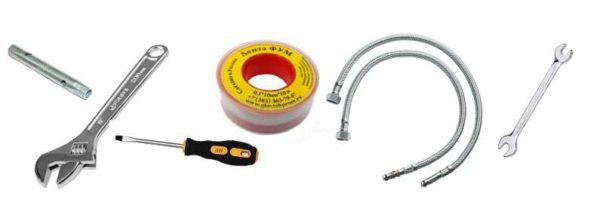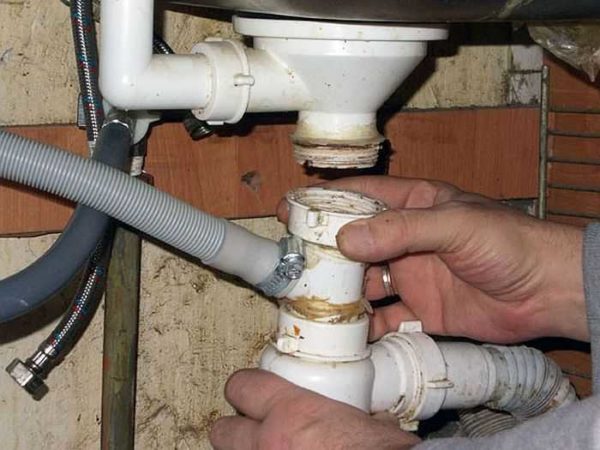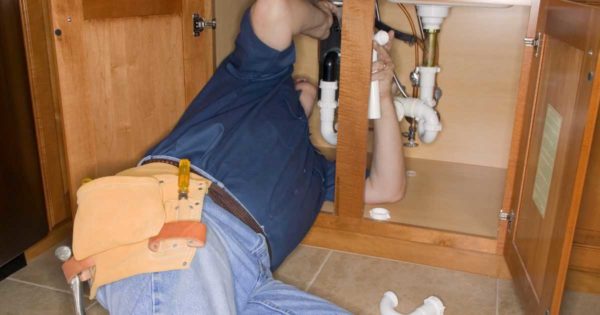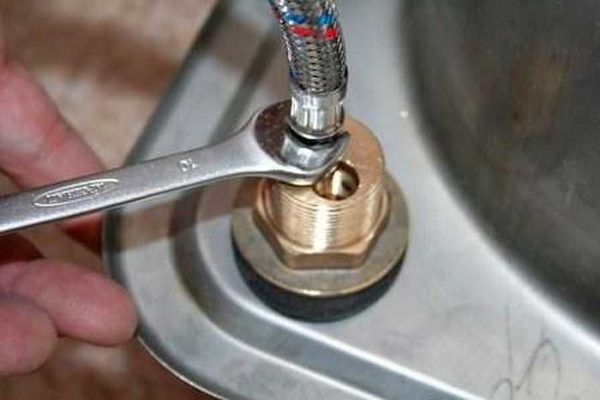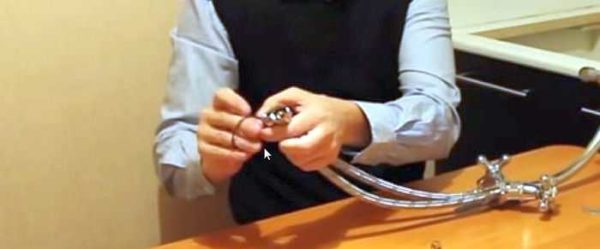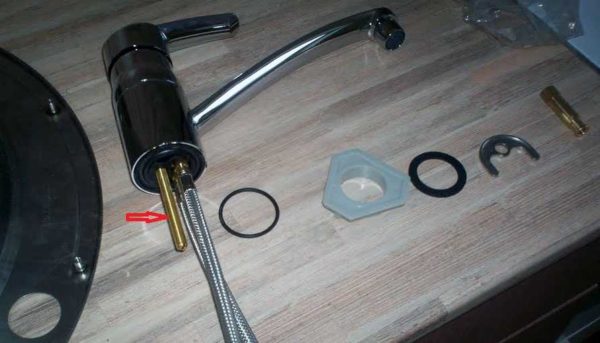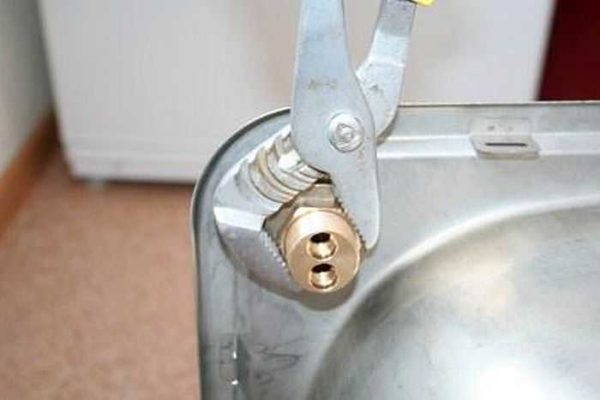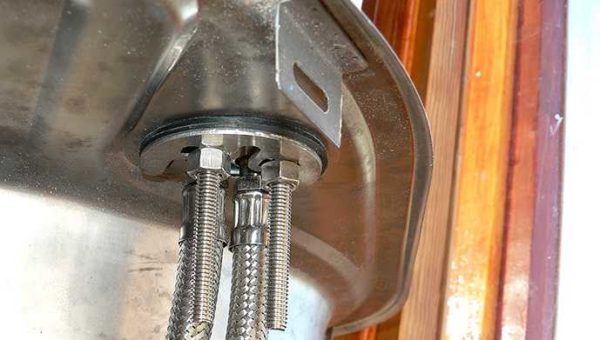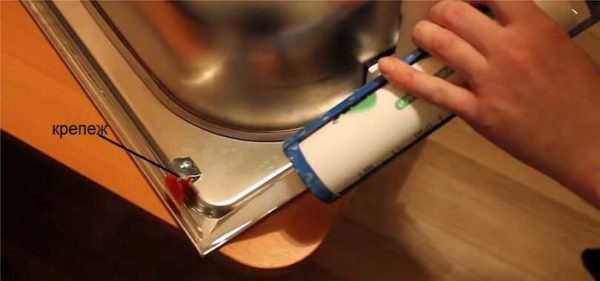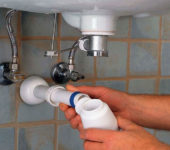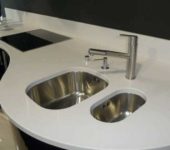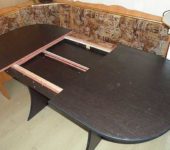How to change the faucet in the kitchen
From time to time, the taps in the kitchen need to be changed. They are operated in a tough regime, they get a large amount of detergents, because of which they become unusable or simply lose their appearance. Therefore, many come to the need to change the kitchen mixer. But it is not at all necessary to call a plumber for this. Replacing a faucet in the kitchen is a simple job, you can do it yourself, and they will ask for a decent amount of money for it. We save and do everything ourselves.
The content of the article
What is needed for work
Replacing a faucet in the kitchen consists of two stages - first, remove the old one, then mount and connect a new one. In addition to the new mixer, you will need a wrench of a suitable size and some auxiliary materials. Most often, you need keys for 10 and 11, for 22 and 24. In order to remove the mixer from the countertop or sink, you will need two adjustable wrenches.
One more point. You will most likely need new hoses. Although most kitchen mixers are equipped with flexible hoses, their length is 30 cm. This is not always enough. Before starting work, you need to make sure that the length of the standard hoses is enough.
It depends on how far the cold and hot water pipes are from the mixer. The hoses should sag slightly, because when the tap is turned on / off, a sharp pressure change occurs, from which the hoses twitch. If they are tight, the connection will loosen very quickly and flow. So, if from the pipes to the inlet of the mixer is 25 cm or less, the standard hoses will suffice. If more, buy longer ones. And advice: get high-quality, not the cheapest. They quickly deteriorate and can flood both you and the neighbors below, if any. Therefore, take flexible hoses in stainless steel braid or corrugated stainless pipe. They will serve for a long time and without complaints.
To buy hoses for a kitchen faucet, you will need the size of the “needle” - the tip that is screwed into the faucet - as well as the pipe diameter and type of end (male-female) - to find the right fittings.
To seal the connection, you will need linseed tow with a paste sealant or fum tape. You will need a variety of gaskets and o-rings (should be included, but find whatever you have, just in case).
How to remove the old
Before starting work, turn off the water supply to the tap, drain the residues that are in the pipes. Now you can start replacing your kitchen faucet. To remove the old tap from the sink, you need to unscrew the nut that is screwed onto its body from the bottom of the sink. If the sink is installed in a kitchen cabinet, it is very inconvenient to work. It is better to remove the sink. For this you have to:
- Unscrew the siphon. There are many designs of siphons, but each has a nut that must be unscrewed. It is difficult to confuse it - it has protrusions for a better grip. Unscrew the nut, remove the lower part of the siphon.
- Unscrew the hot and cold water hoses that go to the mixer. Usually the union nuts are removed. To do this, you need a 22 or 24 key.
- Trim sealant around the sink, if present.
- Remove the screws securing the sink to the worktop. You will see the bolts if you "dive" into the table.
The sink can now be lifted and turned over. Here you will see a nut that needs to be unscrewed. For this work, you will need two adjustable wrenches. One hold the body from the "front" side of the sink, the second unscrew the nut.
Sometimes it is very difficult to remove an old faucet in the kitchen: it "sticks".For this case, kerosene or universal grease in WD-40 cans is suitable. Both substances are of low density and can seep into microscopic crevices. The composition or kerosene is applied to the connection, which must be disassembled, wait 10-15 minutes, try to unscrew it.
If all the tricks did not help, there is a simple method that is suitable if the old mixer is not going to be used anywhere else: you can cut the body together with the nut with a grinder. The method is tough, but after suffering for an hour trying to remove the nut, they resort to it.
If the tap is installed on the countertop, you will have to work "from the inside" - crawl into the closet with a flashlight, and so unscrew the nut.
Repair in the kitchen 9 sq. m. with a photo, see here.
Kitchen faucet installation
The faucet replacement in the kitchen is nearing its end. Now we assemble the crane and install it in place. It is much more convenient if work can be carried out on a removed sink. If this is not possible, you will have to carry out all the manipulations reclining in the closet. About the same as in the photo.
Assembly
First, we screw the flexible liners to the mixer. They are screwed in by hand, then tightened a little with a wrench - no more than 2 turns.
Now we need to pull a rubber gasket on the body, which seals the junction of the mixer and the sink surface. This is a decent diameter rubber ring - included. It is pulled through the installed liner hoses, placed on the body.
Modern kitchen faucets have two different forms of attachment to the sink. The first one - with a nut - you saw in the part where it was about dismantling the mixer. It's just an "older" system. The second provides for the presence of rods and spacers in the form of a horseshoe. There is usually one rod, but there may be two. If there are such rods, they are screwed into the corresponding socket. If a nut is screwed on it, it is removed.
Installation on a sink
The kitchen mixer can now be installed on the sink. First, flexible hoses are inserted into the hole, then the body is placed in the center of the hole. Further actions depend on the type of fastener. If this is an ordinary nut, they simply tighten it, trying not to overtighten it.
If it is a model with rods, the appearance is different, although the meaning is the same. First, the spacer is put on (it is also in the shape of a horseshoe), then the pressure plate. Next, nuts are screwed onto the rods. The nuts are tightened slightly with a wrench. THERE is nothing complicated.
Turn the sink over and turn on the tap. He must stand dead. There should be no backlashes. If there is movement, tighten the mount.
Planning a kitchen set is described here.
Installation of a sink
Now the sink with the mixer installed on it is placed in the prepared place. First, a silicone sealant is applied from the back of the sink along the perimeter (not acrylic - it quickly turns yellow). Then the sink is installed in place, the fastening bolts are tightened.
Then everything is simple: put it in place, align with the edges of the table, tighten the fasteners. It is made in the form of petals that attract the sink to the countertop when you tighten the nuts. The sink must stand firmly, without shifting.
Connecting hoses and siphon
With the siphon, everything is simple - we pulled the corrugated hose to the branch pipe, tightened the nut by hand until it stops. All. Do not use keys - everything is made of plastic.
Connecting the water supply is not much more difficult. You just need not to confuse the cold water connection. Her entrance is on the right. After making sure that there is a rubber gasket in the union nut of the flexible liner, we bring it to the pipe, tighten the nut as much as possible with our fingers. Then we take the key and tighten it one or two turns.Do not pull too hard - you can cut through the gasket and then the connection will flow.
But what about tow, reeling and pasta? They are not required when using normal quality hoses. The connection is reliable and sealed without them. It will be possible to reel a lot if, after a test run, drops of water appear from under the nuts. But that shouldn't be. There is no need to simply wind tow or fum tape. Excessive time and excess pressure on the union nut.
After connecting to the hot pipeline, we can assume that the independent replacement of the faucet in the kitchen is over. It remains to turn on the water and check if everything is working properly and if the connections are leaking. For this, the joints are wiped with a dry cloth, and then carried out several times by hand.


